EEUU/8 junio 2016/Fuente: Whashinton
Resumen:
Ron y Vanessa Ford son los padres de un niño transgénero 5 años de edad, y recientemente escribió para The Washington Post acerca de por qué ellos aprecian y apoyan la directiva de la administración de Obama a las escuelas sobre la acogida de los estudiantes transgénero. La directiva ha provocado una reacción de las autoridades locales y estatales que lo consideran extralimitación federal, y que sobre todo oponerse a la exigencia de que las escuelas permiten a los estudiantes transgénero a utilizar baños que corresponden a su identidad de género.
————————————————————————————-
Ron and Vanessa Ford are the parents of a 5-year-old transgender child, and they recently wrote for The Washington Post about why they appreciate and support the Obama administration’s directive to schools on accommodating transgender students. The directive has spurred a backlash from local and state authorities who call it federal overreach, and who particularly object to the requirement that schools allow transgender students to use bathrooms that correspond to their gender identity.
During a town hall event on June 1, President Obama said his decision to direct public schools to allow transgender students to use the bathrooms of their choice was based on the law and is intended to keep children out of «a vulnerable situation.» (Reuters)
For the Fords, the debate about bathroom access is really a debate about discrimination, and about whether the government will or will not sanction discrimination against their child.
“We are an interracial couple,” they wrote. “Fifty years ago, in many places across the country, it would have been legal to discriminate against us because, many people said, a fundamental part of who we are was somehow offensive and perverse. Our daughter is transgender. In many places across the country, it is legal to discriminate against her because, many people say, a fundamental part of who she is somehow offensive and perverse.”
We asked readers to weigh in on how the bathroom debate compares to earlier civil rights debates. There were many responses, representing the wide range of views and strong feelings that have characterized the discussion about transgender rights in America.
We heard from people who believe that the fight for transgender rights is akin to the civil rights battles of the Jim Crow era, and others who believe it is insulting to compare the two.
We heard from Christians who said that people should live according to their biological sex because God doesn’t make mistakes, and we heard from Christians who said their faith calls for loving and respecting all people, regardless of gender identity.
We heard from transgender adults who praised the Fords for giving their daughter the gift of unconditional love, and from parents of transgender children who said they appreciated the Fords’ courage in speaking publicly.
Others said they believe the Fords are encouraging a child’s delusion, and they questioned whether such a young child is capable of deciding that her gender doesn’t match the sex she was assigned at birth. How do the Fords know that their daughter isn’t going to change her mind?
Vanessa Ford pointed to an emerging body of research on transgender children who are supported and affirmed by their families — a population that has been difficult to study until now because the acceptance of transgender children is a relatively recent phenomenon.
One recent study from the University of Washington — published in Psychological Science in 2015, and part of a longer longitudinal study of transgender children younger than 12 — suggested that transgender children’s gender identity is real, and not the result of confusion or acting. Another, published in February in Pediatrics, showed that transgender children who are supported by their families have the same rates of anxiety and depression as children who are not transgender — and they have much lower rates of anxiety and depression than gender-nonconforming children in earlier studies.
Ford said that people who want to know more about their decision to support their child’s gender identity can read the letter they sent to family and friends, which appears in full below.
Here are a selection of responses The Post received from readers to the Fords’ original essay, who wrote about how the debate about transgender rights compares to past civil rights battles. Some have been edited for length and clarity.
“Being transgender myself, I spent my childhood, youth and most of my adult life in denial and hiding my true self”
I fully agree with the article and the notion it expresses. Being transgender myself, I spent my childhood, youth and most of my adult life in denial and hiding my true self, resulting in self-loathing, self-harm and two suicide attempts. (Thank the Lord, also in a 30+3 year marriage — yes, three years already as wife and wife — and with two open-minded children.) No kid, no youth, no adult who happen to be trans should be discriminated against. Bathroom bills aren’t about bathrooms, aren’t about safety, they are about discrimination. 70 years ago, the marriage of my mother and my father would have been illegal, I would have been sent to a concentration camp (probably right into the gas chambers) which is why I am very sensitive to discrimination and do advocate for equal rights for any human being no matter age, ethnicity, gender, sexual orientation, whatever.
— 55 years old, Germany
“People who are transgender/non-conforming need protection”
Bless you for having the courage to share your family’s story. Your children are both fortunate to have you as parents.
Since your story was personal, I wanted to add a comment to readers who worry that pedophiles will use this legal protection as a means to abuse children in public bathrooms. We can protect children from abuse only if we adults move beyond fear and learn facts. Pedophilia is not characterized by random — or public — crimes. (Consider wrenching stories of well-hidden clergy abuse.) The truth is, people who are transgender/non-conforming need protection from others wishing to harm them.
— 53 years old, Silver Spring, Md.
“God bless parents like yourselves”
I am a transgender woman, now aged 71, who grew up in fear of being locked up and the key thrown away, so I tried to conform but I was bullied at school, called names and “rechristened” a girl’s name by the boys because of how I was. I tried to transition in 1962 when I was 17, but I didn’t have supportive parents or support groups, and the Internet was not even dreamt about at that time. So I thrust it deep, lost myself in studies and got innumerable degrees — and also became borderline alcoholic in a desperate attempt to numb my mind. A failed suicide attempt at the age of 27 led me to seek help from a medical professional. I transitioned in the early 1970s and have had a wonderful, fulfilling life for almost half a century now. God bless parents like yourselves who by accepting their child as they are, can avoid the fear, trauma and pain of trying to be somebody that you are not.
— 71 years old, United Kingdom
“I wish we could change our society”
Instead of changing bodies, I wish we could change our society to one that accepted feminine boys and men and masculine girls and women so that no one felt compelled to expose themselves to the risks of life-long hormone administration or the removal of healthy organs.
— 50 years old, Philadelphia
“I was so close to suicide so many times I have lost count”
Having lived through the civil rights movement since the 1950s, I see little difference in the nasty justifications to discriminate based on race or gender identity. Among certain people there still seems a deep seated need to identify those who are different and exclude them from society and to limit their rights. I am a transgendered woman and the discrimination kept me in the closet from about age 8 until my transition this year at the age of 67. What was it like to live a restricted, unauthentic life for 6 decades? I really can’t put it into words and when I try all that comes is tears. It is a miracle that I am still here today to enjoy my newfound life as myself. I was so close to suicide so many times I have lost count. I am only here because my sense of duty towards family kept me tied to this life. This long, long lonely sojourn was not because there was anything wrong, perverse or abnormal about me, but was entirely the result of a cruel and uncaring society that promised the complete destruction of my life and the lives of those I held dear should I ever express my true self. When I realized my difference in 1957 we were living north of Atlanta and I still can see in my mind the towering figures in white satin robes manning their KKK Labor Day roadside coffee stops to disseminate hate under the pretense of performing a civic service. Human cruelty seems to have no limits. I think we can win the fight this time, but it is very hard. I cannot bear the thought of children like Ellie experiencing any of what I had to endure. People who support these laws have not the slightest concept of the suffering and damage they are attempting to inflict on the transgender community and its children. The human heart still has an infinite capacity for ignorance and cruelty.
— 67 years old, Sequim, Wash.
“This boy is not and never can be a girl”
This is outrageous! These “feel good” articles are deceiving and totally evil. This is nothing more than social engineering! Any parent who allows this “transgender” fantasy is guilty of child abuse! This boy is not and never can be a girl because his sex is defined in his DNA and CANNOT BE CHANGED! STOP THE MADNESS! Children who act this way need help, not pandering to their delusional fantasies! As for bathrooms, people need to go to the one according to their biological sex! Period!
— 70 years old, Orlando, Florida
“You are made to feel you are not wanted”
I wish you all the best with your transgender child. It is a rough life as most are not accepting. I transitioned almost twenty years ago so I have seen the storms directly. Looking just for bathroom rights is probably one of the more minor issues – not that it is not important. Being able to secure work, housing and overall life opportunities are far more critical. As a transgender person, there is a pressure everywhere that is forcing you out of society. You are made to feel you are not wanted and are not accepted as you are. Anyone can deal with such attitudes in the short term, but in the long-term it is easy to just give up. Your skills do not mean anything, because any potential employer just looks at your transgenderism and decides not to hire. That is the killer!
— 48 years old, Reno, Nev.
“It is extremely insulting to compare trans rights with the struggle that black people have faced”
It doesn’t compare at all because they’re two completely different situations in different time periods affecting two different types of people. It is extremely insulting to compare trans rights with the struggle that black people have faced ever since they came to America. Until trans people are lynched, getting bit by police dogs, hosed with hard pressured water, and treated like actual second class citizens then the comparison is extremely silly!
— 23 years old, Houston, Texas
“Get over it, people. It’s no one’s business what’s in someone’s pants.”
This issue pisses me off. Let a person use the bathroom that they want to use. People are afraid there will be “men” in the ladies room, while the person next to you checking their makeup may have a penis, they think of it as a mistake because they have a woman’s brain. Transgender people have been around since the dawn of time and have been using public restrooms since their invention. Sex reassignment surgery has been done since the 1930’s (Google it). Get over it, people. It’s no one’s business what’s in someone’s pants when it comes to marriage or bathrooms. If we would all treat each other with the love and respect they deserve as a human being the world would be a much nicer place, and just maybe “officials” would be free to tackle the important issues.
— 53 years old, Washington, Pa.
“A child of 4 or 5 cannot and should not make a decision like that”
It is a parent’s job to guide the child in the right direction, and a child of 4 or 5 cannot and should not make a decision like that. If their “daughter” shows her penis in any bathroom I’m in, HE will be told he’s a BOY and told to get out of the LADY’S ROOM!!!
— 60 years old, Seattle, Wash.
“No child should have to grow up that way”
My daughter claimed her identity as female at age eight. Before that time she lived in constant stress. She was constantly forced to use the wrong restroom. The boys’ room was a foreign and unsafe space for her. She was bullied there. She knew it wasn’t the right place for her, and consequently she stopped going. She developed a bowel disorder that could plague her for the rest of her life. Even though we live in a relatively accepting community, she still faces a lot of pressure from a society that does not completely accept transgender children. No child should have to grow up that way. There is an immediate and direct connection with previous civil rights struggles. It’s the same phenomenon cloaked in different labels.
— 52 years old, Boulder, Colo.
“We are becoming too permissive with our children”
As a Catholic, and a Christian, I believe we are becoming too permissive with our children. I remember when my sister and I were growing up, we were allowed to play as we wanted. We hung out with boys and dressed in boyish clothes. We played with toys meant for boys. We never doubted the fact that we were girls. Until we come to terms with the fact that a person’s gender cannot completely be changed, nobody will be happy. As for the bathroom, a lady should never be forced to share a bathroom with a man.
— 44 years old, Lubbock, Tex.
“This push towards transgender acceptance is very dangerous”
How did this turn into a civil rights movement? Because it shouldn’t be, it should be about teaching your child right from wrong and ignoring those who would disturb morality. The bathroom and transgender rights would not be a problem if people understood that it is harmful to allow one to identify as the opposite gender. Transgenders have a 41 percent chance of committing suicide. In what way is allowing children to do the same a positive thing? You can google transgender violence or bullying and it’s common. This push towards transgender acceptance is very dangerous. It’s a safety issue that should have been addressed before experts decided that kids should transition. The best way to protect your child is to let them know they need to follow what their parents say instead of the child doing what they want. Parents need to teach kids right from wrong.
— 25 years old, Chicago, Ill.
“Christians should act like Christians and embrace the diversity of humankind”
My husband and I have been foster parents for 30 years to children from many backgrounds and inclinations. Our role as adults is to do all we can to make a child feel included. Fear is what creates stupid laws and an atmosphere of paranoia. Remember the mean girls in the high school bathrooms? Those were the people I feared. Haven’t had an issue with a restroom since then. Do we start challenging people who do not fit the model of femininity, masculinity and become the bathroom police of who can enter? Anyone with evil intent can always find a way. Christians should act like Christians and embrace the diversity of humankind.
— 76 years old, Kensington, Md.
“Students are much more accepting than their parents”
I think state bathroom laws regarding transgender students IS the new civil rights debate. I am a teacher at a public school and I can tell you that students are much more accepting than their parents, so there is hope in the next generation for all civil rights issues. I agree with the rights of all humans and agree with the Dept. of Justice and the federal government withholding money from states that discriminate.
— 58 years old, Bowie, Md.
“Separate but equal”
To those who want to compare sex-segregated facilities to race-segregated facilities, I would only ask this: if requiring people to use facilities that match their sex regardless of their gender identification is the same as prohibiting people of different races from using the same facilities, what possible moral or legal justification can there be for “separate but equal” facilities for different sexes — or for different genders, for that matter?
— 62 years old, Arlington, Va.
“This controversy is about fear”
Oh, I don’t think it is even about civil rights. This controversy is about fear. All of a sudden we are concerned about predators accosting our women in public restrooms. There has never been a law to prevent men from entering a women’s room in the first place, but now, men or even worse, boys, are going to pretend they are female to enter a restroom to attack women?? Who thinks like this? Most people do not flash their private parts in public restrooms. I don’t have any personal experience with transgenders that I know of, but I have always had gay friends or co-workers. I never thought I would see the progress we have achieved in the last few years. It’s about time, and now we have another hurdle. Can’t we just accept them as people?
— 58 years old, Crownsville, Md.
“I’m afraid they’re making a terrible mistake”
A 5-year-old transgender?! At 5, I wanted to be a boy. I’m so glad my mother didn’t indulge that. I’d be so screwed up if she had. I’m now a happy healthy adult heterosexual female who is still a bit of a tomboy. Just do gender neutral activities and buy gender neutral clothes until the kid finds out who s/he is. These parents think they’re doing a good thing, but I’m afraid they’re making a terrible mistake.
— 32 years old, Los Angeles
“I too worry about what would happen if society turns against my child”
Vanessa, I am so proud of you and Ellie and your entire family. Your words are powerful. As the parent of another transgender 5-year-old, I too worry about what would happen if society turns against my child and discrimination were to be legislated on the basis of fear and falsehood. I start too many days reading missives filled with fear and anguish from parents whose children are not affirmed in their communities, and who hang in the balance between life and death. I urge people to listen to your words carefully, and to allow you to be the bridge by which they cross over and experience for a moment, the life of the “other.” Love to you and your family.
— 39 years old, Melrose, Mass.
“Last time I checked, restrooms had private stalls”
I really don’t understand all this fear of ‘perverts’ in the bathrooms. As far as I can tell there has never been a reported case of a transgender person ‘misbehaving’ in a restroom. Although there are now many cases of cis-gendered persons being harassed because they don’t look ‘male’ or ‘female’ enough in some people’s eyes to be using the restroom of their sex. Last time I checked, restrooms had private stalls – if we could all just respect that privacy – this would be a non-issue.
— 64 years old, Reston, Va.
“My daughter is also transgender”
My daughter is also transgender. I fear for her safety because she is living in an area where politicians are actively advocating laws to discriminate against her. The least-informed people are spreading fear and hatred against some of the most wonderful, caring people I know. I know I will never fully know the pain and suffering of those who struggled with racial discrimination, but having a transgender daughter has opened my eyes to how heartbreaking it can be to parent an innocent child who is targeted by those who know nothing about her.
— 54 years old, Houston area
“I salute these kids for their courage and strength”
I find it totally fascinating that kids at 4 and 5 are now confident enough to in essence come out and express who they are and how they feel. Just as a parent, I find it amazing. (It also shows that even at early ages kids listen and form their own ideas and actions.) My kids are not transgender, but I deal with issues of self-image, self-confidence, anxiety and depression. From that perspective alone I salute these kids for their courage and strength at any age and the parents that provide and support them!
— 50 years old, Washington, D.C.
“I am the father of a gender non-conforming daughter”
I am the father of a gender non-conforming daughter. At age 5 she refused to wear dresses. She sometimes said that she wanted to be a boy and periodically asked to be called by a boy’s name. She often refers to herself as “he” in her various imaginary games. At age 6, she started asking for “fancy” clothes, i.e., boys’ suits, which she loves wearing. That being said, she has never complained about using a girls’ bathroom, has never said she wished she had a penis and refers to herself as our daughter. Her teachers have been incredibly understanding and supportive, and her fellow elementary school students appear to treat her just like anyone else. I confess that I don’t understand all of her preferences but what I do understand is that she’s my child and deserving of my unconditional love, support and acceptance. My daughter is a remarkably happy, easygoing child and we attribute that, in part, to the casual acceptance of those around her. Of course I have no idea what path my daughter will take through life but I know that the objective of all parents is to help their children become the best versions of themselves that they can be. It baffles and infuriates me that some people might stand in my way to do that.
— 56 years old, Bethesda, Md.
“As a Christian this deeply disturbs me!”
I find it outrageous. As a Christian this deeply disturbs me! It has gotten progressively worse. My daughters are grown but I won’t subject my 3 yr old gbaby to such foolishness. She should never have to worry about who’s in the bathroom with her. The problem with this is it will open the door to perverts and that IS the problem. As far as the little boy wanting to be a little girl, I wont even comment but to say, Puhlease, God makes NO mistakes!
— 48, Waldorf, Md.
“I have a few questions”
This is a good article. I support people being who ever they are. I also believe that this is a civil rights issue. Bathrooms should be built that are unisex so this does not continue to be a real issue. However, I have a few questions as I am trying to learn more about transgender people. Is this a chromosome issue? What happens when this child starts to grow facial hair? Will she have some kind of surgery to deal with genitalia? What about her voice? Will she take hormones? Will these hormones stunt her growth? Does she get psychological counseling? Sometimes people fear other people who are different because they lack information. Just like racism, sexism, ageism etc.
— 58, Washington D.C.
The Ford family’s letter to family and friends about their child’s coming out as transgender:
Dear Friends,
For a long time, we said, “Our son likes dresses but also ninjas” to describe our child to others. However, we, and a number of experts and specialists, don’t feel that’s a fair description of our child anymore. Our child insists every day, in many ways that they are a girl and has for a long time. Our child has asked for us to call them her/she/sister and Ellie is a name she chose once she realized people would think she was a boy with her birth name.
Starting around age 4, Ellie has consistently and persistently told us she is a girl in many ways. The most clear have been “I’m not a boy. I am a girl.” “I’m a girl in my heart and my brain.” Most times when she says these things, she says them without prompting or questioning. She draws herself as a stick figure girl, says she’s a girl — often many times a day when playing (“I’m the girl power ranger, I’m Wonderwoman/SpiderGirl/BatGirl etc). We purchased a whole “girl” wardrobe after a tantrum one morning about having to wear “boy” underwear. Since that point, our daughter has truly emerged. She has blossomed, is happier and just seems more herself. It’s hard to explain. (Ellie chose her new name by the way. It’s the name of her lovey and it means “shining light”!)
We haven’t seen that she’s experienced a lot of the distress (dysphoria) that often appears in transgender children but we have seen some, and it’s been concerning. For example, we’ve heard her talking in her room late at night pointing and poking at her chest saying “Boy! Boy! Boy! I am a boy! I like power rangers!” It was unsettling and her tone was worrisome. That was the last time she ever mentioned being a boy and we soon got her the clothes to match who she said she really was. This has helped. Another example was when we didn’t have a “girl” swimsuit and she had a rash guard that said “surfer girl” on it. Twice she threw a tantrum having to put on a life jacket. We didn’t know why but eventually she said, “It will make me a boy! It covers my girl words. People will think I’m a boy and I’m not!” So we got her a “girl” suit and she is much happier… and safer in the water!
When a person is transgender, their brain doesn’t match their body and we are going to work to ensure we can do whatever we can to affirm our child so she doesn’t feel the conflict between how she feels inside and how she is seen on the outside.
We thought about waiting with the name and pronouns… seeing how this played out over time. But the reality is, the risks are too high for us to ignore her true self as she tells us, and has been telling us. If, later in her life, she tells us differently, we will listen then too. Over 50% of transgender teens attempt suicide, even higher for teens of color like Ellie. Ron and I are going to do every single thing we can so our child knows they are loved for whoever they tell us they are. And our child tells us she is Ellie.
Finally, and very importantly, we don’t see anything “wrong” with our daughter. This is the way our child was born and we love her… and hope the community around her in school, playgroups etc. will do so too.
All experts say how important it is for parents and other important people to be knowledgeable about this all and that acceptance and support of the child is the #1 predictor of the child’s health and safety (especially when it comes to that horrific statistic above). The leading groups around all of this are here in DC so that’s good. Ultimately we don’t care at all about the label, only about the well-being and happiness of our child.
If you have more questions, or want to learn more, we have listed some resources below . Thank you so much for your support!
8 Great Children’s books
Lots of great resources for families here
PFLAG has a great new resource guide for families of transgender or gender-expansive children. Childhood focus starts on page 16.
Human Rights Campaign
Children’s National Medical Center
Fuente de la Noticia:
https://www.washingtonpost.com/news/education/wp/2016/06/08/parents-wrote-about-their-transgender-five-year-old-and-readers-had-strong-reactions/?wprss=rss_Copy%20of%20local-alexandria-social&utm_source=twitterfeed&utm_medium=twitter
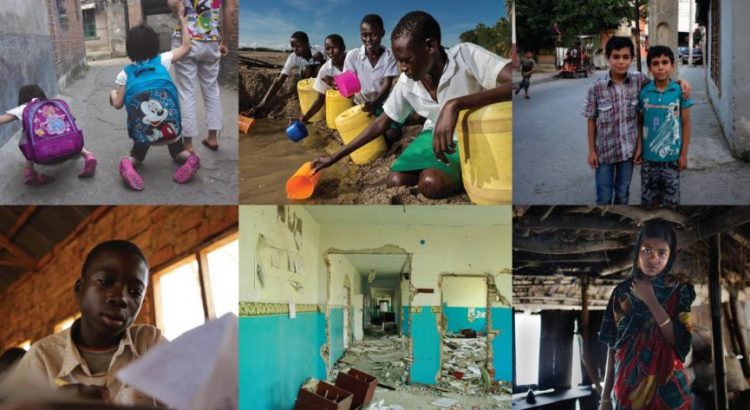
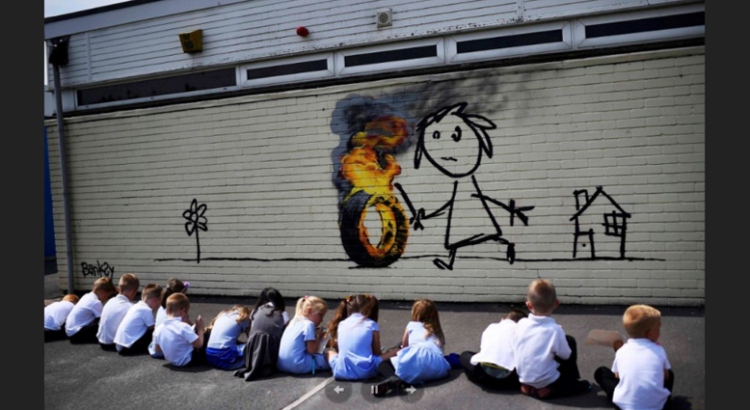
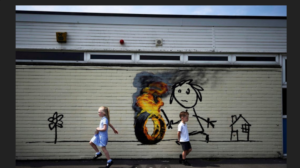 El representante británico del “street art” realizó un mural en agradecimiento por bautizar un edificio con su nombre
El representante británico del “street art” realizó un mural en agradecimiento por bautizar un edificio con su nombre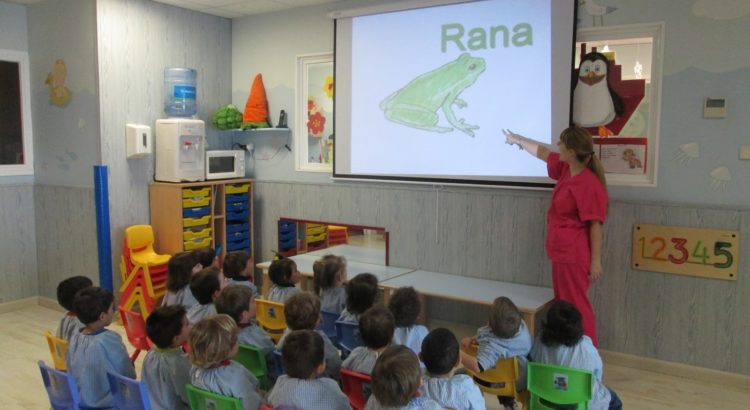

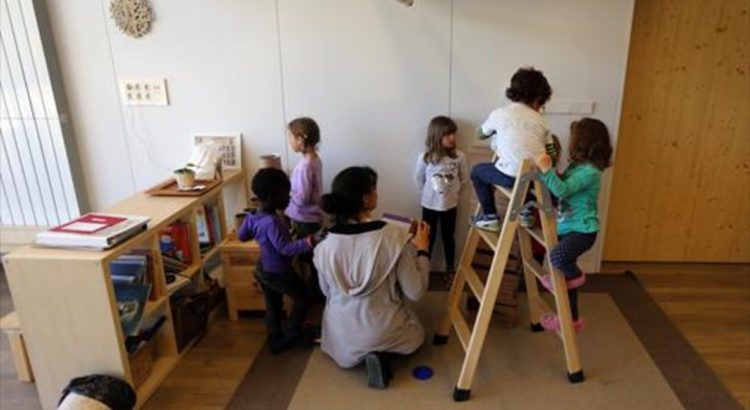

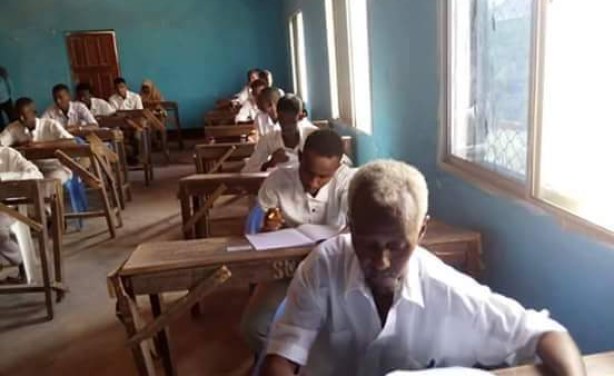







 Users Today : 28
Users Today : 28 Total Users : 35460237
Total Users : 35460237 Views Today : 34
Views Today : 34 Total views : 3418929
Total views : 3418929